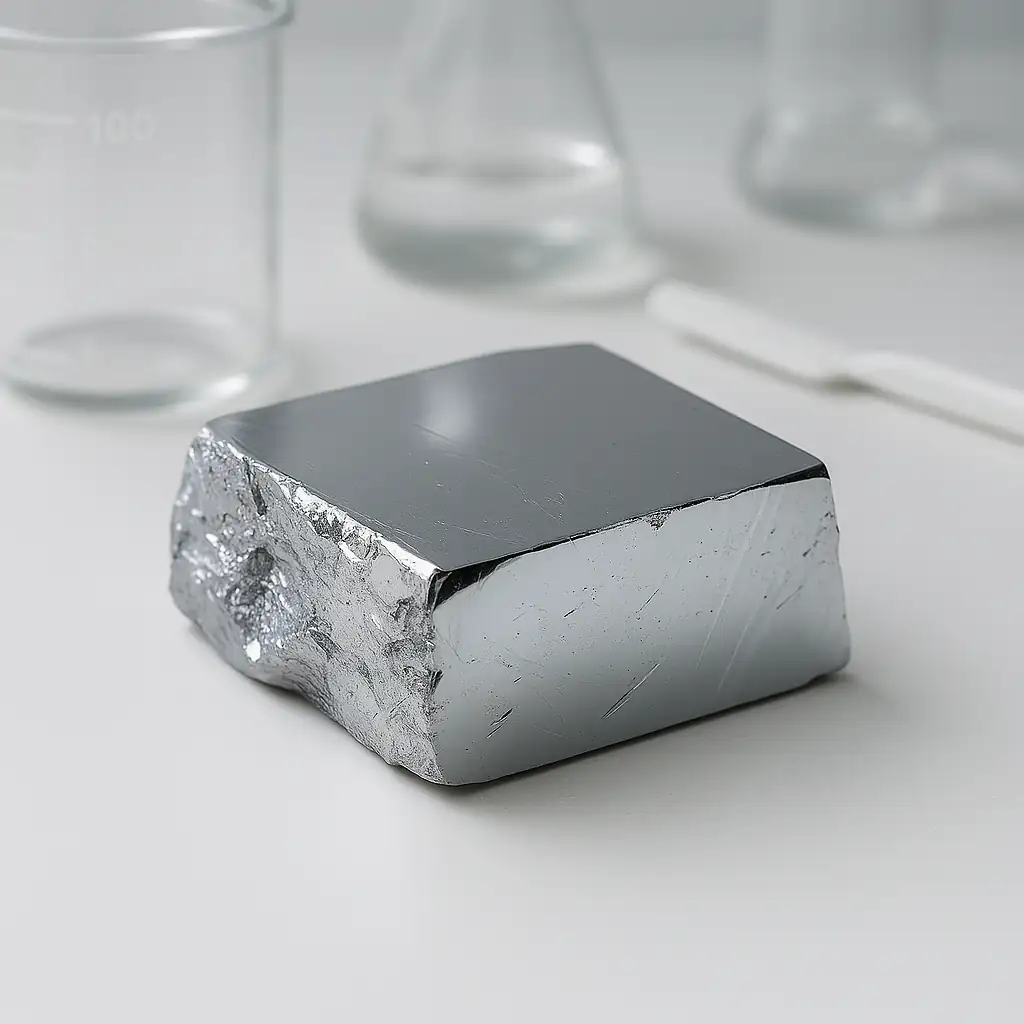Introduction
Chromium, element 24 in the periodic table, exhibits unique characteristics. As a transition metal, it holds significant scientific interest. Chromium properties include high corrosion resistance and durability, ideal for steel alloys. By May 2025, its role in stainless steel, green technology, and catalysis grows. This article explores Chromium properties, such as its hardness and chemical versatility. It traces its discovery in 1797 by Vauquelin in Siberian ore. Chromium uses in industries like aerospace and electroplating are detailed. Additionally, Chromium compounds, including chromates, show applications in dyes and pigments. The element’s contributions to science are well-established.
Chromium plays a critical role in industrial applications. Its alloys are valued for their strength in construction. The metal occurs naturally in Earth’s crust. Studies of Chromium properties reveal its impact on material science. It is found in mineral deposits worldwide. Its compounds display varied chemical behaviors. Scientific investigations highlight its practical uses. Historical records document its evolution over time. Educational resources include it in chemistry curricula. Ongoing research continues to uncover new insights. The element’s importance justifies detailed analysis.
Chromium’s influence extends across multiple disciplines. Scientific literature provides extensive documentation on its development. Advanced tools, such as spectroscopy, aid its analysis. This article contributes to the understanding of element 24.

Physical and Chemical Characteristics of Chromium
Chromium properties define its role as a versatile element. The metal has a bright, silvery appearance with a polished finish. Its atomic number is 24, and its atomic weight is 52. Chromium has a melting point of 1,907°C, indicating high heat resistance. The boiling point reaches 2,671°C, further showcasing its stability. Chromium properties include exceptional hardness and durability. These qualities make it suitable for protective coatings. It forms a thin oxide layer that prevents corrosion. The density of Chromium is 7.19 g/cm³, typical for transition metals. Its crystal structure is body-centered cubic, enhancing strength.
Additionally, Chromium exhibits notable chemical behaviors. It can exist in oxidation states ranging from +2 to +6. This flexibility supports its use in catalysis. The metal is ductile, allowing it to be drawn into wires. Its electrical conductivity is moderate, useful in specific applications. Chromium reflects light, producing a mirror-like surface. Its toughness makes it ideal for heavy-duty purposes. In its pure form, Chromium is non-toxic. Magnetic properties are present but relatively weak. Chromium properties contribute to advancements in materials science. Resistance to acids and alkalis is another key feature. This durability ensures its longevity in harsh environments. Chromium’s thermal conductivity supports its use in high-temperature settings. Its resistance to wear enhances its industrial value. The element’s ability to form stable alloys is noteworthy. These characteristics make Chromium a critical material in engineering. Let’s examine its historical background next.

The Historical Background of Chromium
Chromium discovery marks an important milestone in chemistry. In 1797, Louis Nicolas Vauquelin identified the element. He isolated it from Siberian red lead ore, known as crocoite. Initially, Vauquelin obtained lead chromate from the mineral. By 1798, he confirmed Chromium as a distinct element. He named it Chromium, derived from the Greek word “chroma,” meaning color. This name reflects the vibrant hues of its compounds. Early extraction methods were labor-intensive and imprecise. Refining the ore required significant effort at the time. Chemists struggled with impurities in early samples.
The process of Chromium discovery advanced over the decades. In 1854, Robert Bunsen produced pure Chromium using electrolysis. This method improved the quality of extracted metal. The breakthrough facilitated industrial applications of Chromium. Geological studies later revealed its abundance in nature. Chromite, the primary ore, is found in regions like South Africa. Modern techniques, such as X-ray diffraction, enhance its analysis. New deposits in Kazakhstan and India have been identified. These discoveries provide a steady supply for global industries. Chromium discovery laid the foundation for its widespread use. Its historical significance remains evident in scientific studies. Advances in mining technology continue to support its extraction. The element’s journey reflects the progress of chemical science. Chromium’s role in early metallurgy was pivotal. Its identification expanded the understanding of transition metals. This history informs current research on the element. Let’s explore its applications in detail.

Applications of Chromium in Industry and Technology
Chromium uses highlight its importance across various sectors. The metal is a key component in stainless steel production. Approximately 75% of Chromium is used in steel alloys. These alloys resist corrosion and wear effectively. Chromium enhances the durability of car parts and machinery. It is also applied in aerospace components for added strength. Chromium plating provides a shiny, protective finish. This plating prevents scratches and extends tool lifespan. Chromium uses include leather tanning, where it improves texture.
Beyond traditional industries, Chromium supports modern technology. It increases energy efficiency in steel manufacturing processes. Chromium is used in solar panel frames for durability. Additionally, it contributes to the production of pigments. Chromium oxide creates green shades in glass and ceramics. Its role in medical devices, such as prosthetics, is growing. Environmental concerns arise from Chromium mining practices. Efforts to recycle Chromium reduce ecological impact. Chromium uses also extend to electroplating for decorative purposes. Its versatility ensures its relevance in innovation. The demand for Chromium rises with sustainable tech trends. Its applications demonstrate a balance between functionality and aesthetics. Chromium’s use in automotive coatings prevents rust. It also strengthens bridges and infrastructure materials. Its role in electronics, like circuit boards, is emerging. Chromium’s adaptability makes it indispensable in modern engineering. Let’s now examine the chemical compounds derived from Chromium.

Chemical Compounds and Their Significance
Chromium compounds illustrate the element’s chemical diversity. Chromium trioxide (CrO₃) is one of the most prominent compounds. It serves as a critical reagent in chrome plating. Chromium trioxide also functions as a strong oxidizing agent. Other Chromium compounds include chromates, such as potassium dichromate. These are widely used in dyes and pigments. Chromium forms coordination complexes with various ligands. The +6 oxidation state is prevalent in many compounds. These complexes exhibit stability in industrial applications.
Chromium compounds also have biological implications. Trace amounts of Chromium (III) support glucose metabolism in humans. However, hexavalent Chromium (VI) is toxic and carcinogenic. Chromium ions produce colors ranging from green to violet. These colors make them valuable in analytical chemistry. Furthermore, Chromium compounds contribute to catalysis in chemical synthesis. They enhance reaction efficiency in industrial processes. Their thermal stability suits high-temperature environments. Chromium compounds are also explored in nanotechnology research. Their properties enable advancements in material science. The study of these compounds continues to evolve. Chromium’s chemical versatility remains a focal point for scientists. This diversity underscores its importance in chemistry. Chromium compounds are used in water treatment processes. They also play a role in corrosion-resistant coatings. Their applications in pharmaceuticals are under investigation. Let’s conclude this detailed analysis.

Leave a Reply